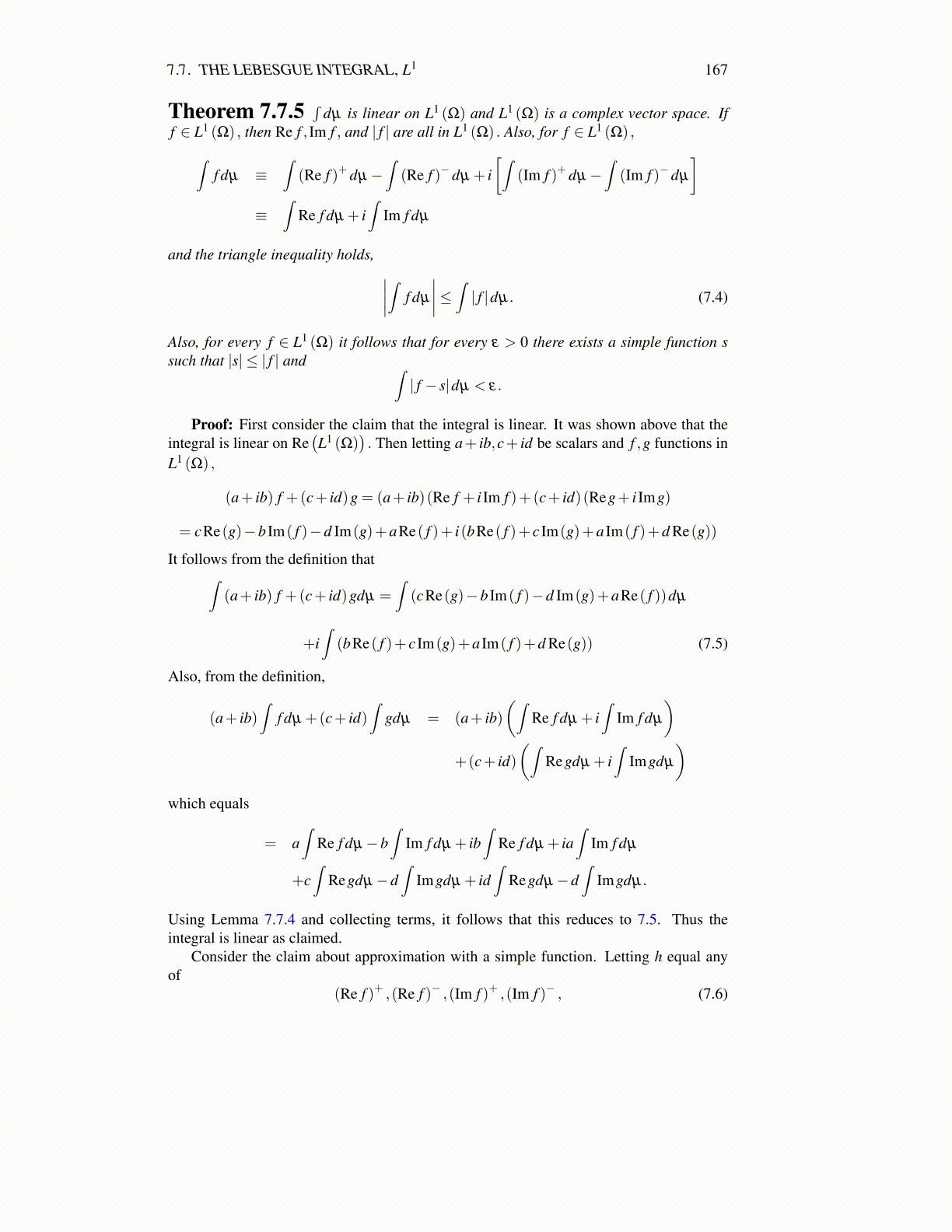
7.7. THE LEBESGUE INTEGRAL, L1 167
Theorem 7.7.5 ∫dµ is linear on L1 (Ω) and L1 (Ω) is a complex vector space. If
f ∈ L1 (Ω) , then Re f , Im f , and | f | are all in L1 (Ω) . Also, for f ∈ L1 (Ω) ,∫f dµ ≡
∫(Re f )+ dµ−
∫(Re f )− dµ + i
[∫(Im f )+ dµ−
∫(Im f )− dµ
]≡
∫Re f dµ + i
∫Im f dµ
and the triangle inequality holds, ∣∣∣∣∫ f dµ
∣∣∣∣≤ ∫ | f |dµ. (7.4)
Also, for every f ∈ L1 (Ω) it follows that for every ε > 0 there exists a simple function ssuch that |s| ≤ | f | and ∫
| f − s|dµ < ε.
Proof: First consider the claim that the integral is linear. It was shown above that theintegral is linear on Re
(L1 (Ω)
). Then letting a+ ib,c+ id be scalars and f ,g functions in
L1 (Ω) ,
(a+ ib) f +(c+ id)g = (a+ ib)(Re f + i Im f )+(c+ id)(Reg+ i Img)
= cRe(g)−b Im( f )−d Im(g)+aRe( f )+ i(bRe( f )+ c Im(g)+a Im( f )+d Re(g))
It follows from the definition that∫(a+ ib) f +(c+ id)gdµ =
∫(cRe(g)−b Im( f )−d Im(g)+aRe( f ))dµ
+i∫
(bRe( f )+ c Im(g)+a Im( f )+d Re(g)) (7.5)
Also, from the definition,
(a+ ib)∫
f dµ +(c+ id)∫
gdµ = (a+ ib)(∫
Re f dµ + i∫
Im f dµ
)+(c+ id)
(∫Regdµ + i
∫Imgdµ
)which equals
= a∫
Re f dµ−b∫
Im f dµ + ib∫
Re f dµ + ia∫
Im f dµ
+c∫
Regdµ−d∫
Imgdµ + id∫
Regdµ−d∫
Imgdµ.
Using Lemma 7.7.4 and collecting terms, it follows that this reduces to 7.5. Thus theintegral is linear as claimed.
Consider the claim about approximation with a simple function. Letting h equal anyof
(Re f )+ ,(Re f )− ,(Im f )+ ,(Im f )− , (7.6)